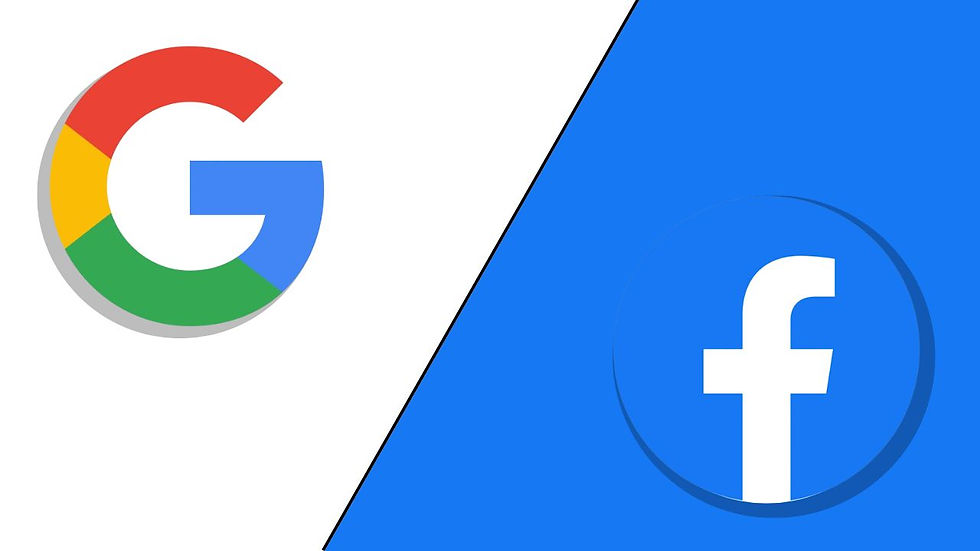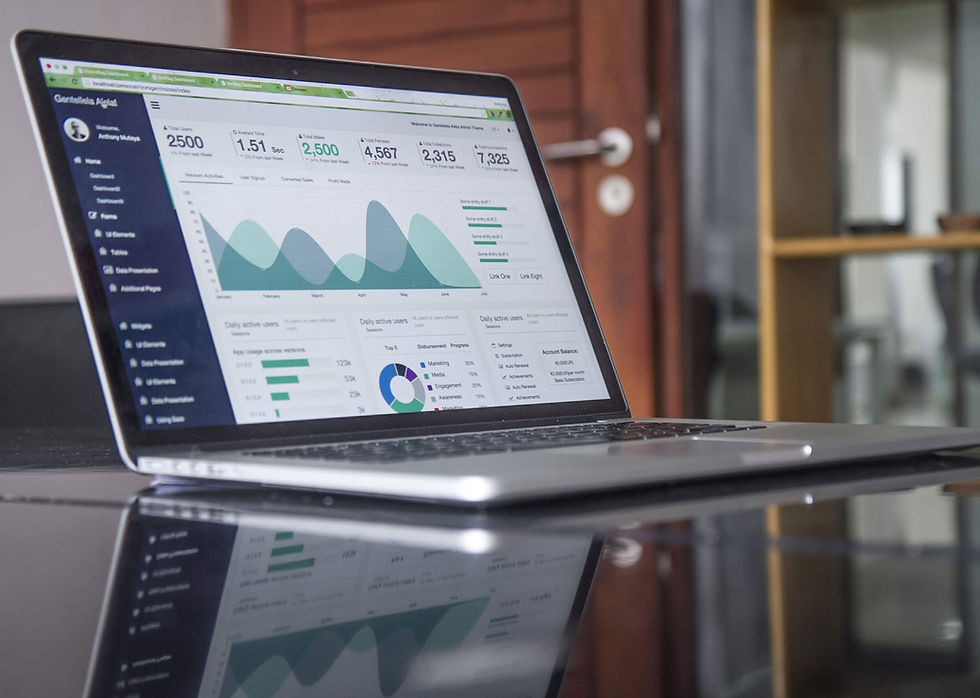Paid Advertising: Accelerating Your Growth with Google Ads and Facebook Ads
- Adam Mohammed

- Aug 20, 2024
- 4 min read
Updated: Oct 10, 2024
Main points:
Google Ads: Higher intent, higher CPC, better for capturing demand.
Facebook Ads: Lower CPC, interest-based targeting, ideal for brand awareness.
Ad Formats: Google offers text, display, shopping ads; Facebook is visual with image, video, carousel ads.
Conversion Rates: Google typically higher; Facebook effective with strong targeting.
Maximizing ROI: Set clear goals, target effectively, optimize creatives, A/B test, monitor, and adjust.
In today's digital landscape, paid advertising is a powerful tool for accelerating business growth. With platforms like Google Ads and Facebook Ads, you can reach your target audience more effectively, drive traffic, and increase conversions. But with so many options, how do you know which platform is best for your business? In this post, we'll compare Google Ads and Facebook Ads, provide tips for maximizing your return on investment (ROI), and offer actionable insights to help you succeed.

Google Ads vs. Facebook Ads: Which Platform is Right for You?
When it comes to paid advertising, both Google Ads and Facebook Ads offer unique advantages. Understanding the differences between the two can help you choose the right platform for your business.
Audience Targeting
Google Ads: Google Ads primarily targets users based on search intent. When someone searches for a product or service, Google displays ads relevant to that query. This makes Google Ads ideal for capturing demand and reaching users who are actively searching for what you offer.
Facebook Ads: Facebook Ads, on the other hand, focuses on interest-based targeting. You can reach users based on their demographics, interests, and behaviors, even if they aren't actively searching for your product. This makes Facebook Ads perfect for brand awareness and building relationships with potential customers.
Cost Per Click (CPC)
Google Ads: On average, the cost per click on Google Ads is higher than on Facebook Ads. According to WordStream, the average CPC for Google Ads across all industries is $2.69. However, this higher cost often reflects the high purchase intent of users on Google.
Facebook Ads: Facebook Ads tend to have a lower CPC, with an average of $0.97 across all industries (WordStream). This makes Facebook Ads a cost-effective option for businesses looking to build brand awareness and reach a broader audience.
Ad Formats
Google Ads: Google offers a variety of ad formats, including text ads, display ads, shopping ads, and video ads. These formats are versatile and can be tailored to specific stages of the customer journey.
Facebook Ads: Facebook Ads also offers a range of formats, such as image ads, video ads, carousel ads, and collection ads. These formats are highly visual and can be used to create engaging, interactive experiences for users.
Conversion Rates
Google Ads: Google Ads typically sees higher conversion rates due to the intent-driven nature of search advertising. Users who click on Google ads are often ready to make a purchase, resulting in an average conversion rate of 3.75% (WordStream).
Facebook Ads: Facebook Ads have a slightly lower average conversion rate of 9.21% across all industries. However, with the right targeting and creative strategy, Facebook can still deliver strong results.

Best Practices for Maximizing ROI on Your Paid Campaigns
Whether you choose Google Ads, Facebook Ads, or both, implementing the right strategies can significantly impact your ROI. Here are some best practices to help you get the most out of your paid campaigns:
Set Clear Goals
Before launching any campaign, define your goals. Are you looking to increase website traffic, generate leads, or boost sales? Clear objectives will guide your strategy and help you measure success.
Target the Right Audience
Use the targeting features of each platform to reach your ideal customers. On Google, focus on keywords that align with your business. On Facebook, leverage audience insights to create detailed buyer personas.
Optimize Ad Creative
Your ad creative plays a crucial role in attracting clicks and conversions. Use high-quality images, compelling headlines, and clear calls to action (CTAs) to grab attention and encourage action.
A/B Testing
Continuously test different ad variations to see what works best. Experiment with different headlines, images, and CTAs to find the most effective combination.
Monitor and Adjust
Regularly monitor your campaign performance and make adjustments as needed. Use analytics tools to track key metrics like click-through rates (CTR), conversion rates, and ROI. If something isn't working, don't be afraid to tweak your strategy.
Leverage Retargeting
Retargeting allows you to reach users who have interacted with your brand but haven't yet converted. Implement retargeting campaigns on both Google and Facebook to stay top-of-mind and encourage repeat visits.

Conclusion: Choosing the Right Platform for Your Business
Both Google Ads and Facebook Ads offer powerful opportunities to grow your business. The key is understanding your audience, setting clear goals, and leveraging the strengths of each platform. By following best practices and continuously optimizing your campaigns, you can maximize your ROI and achieve sustained growth.
Ready to take your digital marketing to the next level? Contact AMUK Media today to learn how we can help you create and manage successful paid advertising campaigns that drive real results.
Discover more in this post about The Ultimate Guide to Digital Marketing for Small Businesses


Comments